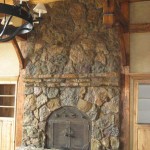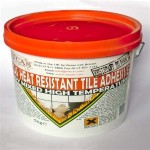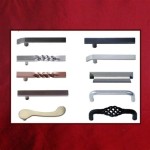How to Make a Wood Fireplace More Efficient
Wood fireplaces, while aesthetically pleasing and capable of providing warmth, are notoriously inefficient heating appliances. A significant portion of the heat generated escapes up the chimney, leading to wasted fuel and increased heating costs. Furthermore, traditional fireplaces can draw warm air out of the house, exacerbating the problem. Fortunately, several strategies can be implemented to improve the efficiency of a wood fireplace, maximizing heat output and minimizing energy loss.
Optimize Fuelwood Management
The type, moisture content, and stacking of fuelwood significantly impact fireplace efficiency. Utilizing properly seasoned wood is paramount. Green or unseasoned wood contains high levels of moisture, which requires energy to evaporate before the wood can effectively burn. This not only reduces heat output but also creates more smoke and creosote buildup in the chimney, increasing the risk of chimney fires.
Seasoning wood involves allowing it to dry for at least six months, preferably a year or more. This process reduces the moisture content to around 20% or less. Signs of well-seasoned wood include cracks or splits in the end grain, a lighter weight compared to green wood, and a dull thud when two pieces are struck together. Hardwoods, such as oak, maple, and ash, are generally preferred over softwoods like pine and fir, as they burn longer and produce more heat per unit volume.
Proper stacking of fuelwood is also crucial. Stacking wood off the ground on pallets or racks allows for better air circulation, promoting faster and more even drying. Leave space between rows of wood to further enhance airflow. Covering the top of the woodpile with a tarp while leaving the sides exposed protects it from rain and snow while still allowing it to breathe. Furthermore, bring wood indoors a day or two before burning to allow it to warm up and dry out any remaining surface moisture.
Enhance Combustion Efficiency
Efficient combustion is key to maximizing heat output and minimizing emissions. Strategies to improve combustion include controlling airflow, utilizing a top-down burning method, and employing catalytic combustors or secondary burn systems.
Airflow control is critical for regulating the burning rate and ensuring complete combustion. Most fireplaces have a damper that controls the amount of air entering the firebox. Opening the damper too wide allows excessive air to flow into the fire, causing the wood to burn quickly and inefficiently. Closing the damper too much restricts airflow, leading to incomplete combustion and increased smoke production. Experiment with different damper settings to find the optimal balance that allows the wood to burn steadily and cleanly.
The traditional bottom-up burning method, where kindling is placed at the bottom of the fire and larger logs are added on top, can be improved upon. The top-down burning method involves placing larger logs at the bottom, followed by smaller pieces of wood and kindling on top. This method allows the fire to burn downwards, preheating the wood below and promoting more complete combustion. It also reduces smoke production and allows for a more controlled and consistent burn.
Catalytic combustors and secondary burn systems are advanced technologies that further enhance combustion efficiency. Catalytic combustors are devices that are installed in the flue of the fireplace. They contain a catalyst that lowers the ignition temperature of the gases produced during wood burning, allowing them to burn more completely. This results in increased heat output, reduced smoke emissions, and decreased creosote buildup. Secondary burn systems introduce preheated air into the firebox above the primary combustion zone. This air mixes with the unburned gases, causing them to ignite and burn, further reducing emissions and increasing efficiency. These systems are typically found in newer, EPA-certified wood stoves and fireplaces.
Minimize Heat Loss
Even with efficient combustion, a significant amount of heat can be lost through the chimney and fireplace itself. Strategies to minimize heat loss include installing fireplace doors, sealing air leaks, and using a chimney balloon or inflatable plug.
Fireplace doors can significantly reduce heat loss by preventing warm air from escaping up the chimney when the fireplace is not in use. They also provide a safety barrier, preventing sparks and embers from escaping into the room. Choose fireplace doors that fit snugly against the fireplace opening and have a tight seal. Tempered glass doors are recommended for safety and durability.
Air leaks around the fireplace can also contribute to heat loss and cold drafts. Seal any cracks or gaps around the fireplace and chimney with caulk or weather stripping. Pay particular attention to the area where the fireplace meets the wall and the chimney meets the roof. Insulating the walls around the fireplace can also help to reduce heat loss.
A chimney balloon or inflatable plug is a device that is inserted into the chimney flue when the fireplace is not in use. It creates an airtight seal, preventing warm air from escaping and cold air from entering. Chimney balloons are relatively inexpensive and easy to install and remove. However, it is essential to remember to remove the balloon before lighting a fire.
Invest in a More Efficient Fireplace Insert or Stove
For homeowners looking for a more substantial upgrade, consider replacing an existing open fireplace with a wood-burning fireplace insert or a freestanding wood stove. These appliances are far more efficient than traditional fireplaces, often achieving efficiency ratings of 70% or higher. They are designed to burn wood more completely and direct heat into the room, rather than allowing it to escape up the chimney.
Fireplace inserts are designed to fit into an existing fireplace opening. They typically have a cast iron or steel firebox, a glass door, and a blower that circulates warm air into the room. Freestanding wood stoves can be placed anywhere in a room where a chimney connection is possible. They come in a variety of styles and sizes to suit different heating needs and aesthetic preferences. When selecting a fireplace insert or wood stove, look for models that are EPA-certified. EPA-certified appliances meet stringent emission standards and are designed to burn wood more cleanly and efficiently.
Installing a fireplace insert or wood stove requires professional installation to ensure proper venting and safety. Consult with a qualified installer to determine the best option for your home and to ensure that it is installed according to local building codes.
Regular maintenance is essential for maintaining the efficiency and safety of a wood fireplace, fireplace insert, or wood stove. Have the chimney inspected and cleaned annually by a qualified chimney sweep to remove creosote buildup and ensure proper venting. Inspect the firebox and chimney liner for any signs of damage or deterioration and repair as needed. Follow the manufacturer's instructions for operating and maintaining the appliance.

How To Make Your Fireplace More Efficient Cottage Life

Fireplace Inserts 5 Money Saving Benefits Efficient Heating

How To Make Your Fireplace More Efficient

How Can I Make My Traditional Masonry Fireplace More Efficient

The Key To Burning Wood Cleanly And Efficiently

How To Make A Fireplace More Energy Efficient 4 Steps

3 Ways I Improved Wood Stove Heating

How To Improve Your Wood Stove S Efficiency

Fireplace Inserts Make Fireplaces More Attractive And Efficient Woodstoves Patio

How To Make Your Fireplace More Efficient This Winter In Chicago Capital Chimney Corp








